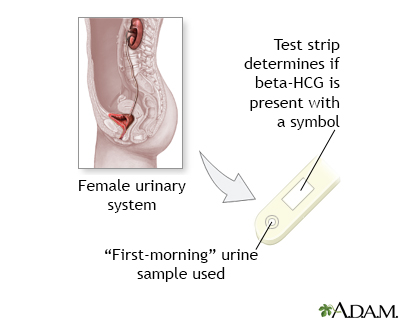
Pregnancy Tests: A Comprehensive Guide
Introduction
Pregnancy tests are an essential tool for women seeking to determine if they are pregnant. These tests detect the presence of human chorionic gonadotropin (hCG), a hormone produced by the placenta during pregnancy. By analyzing a sample of urine or blood, pregnancy tests can provide an accurate indication of pregnancy status.
Types of Pregnancy Tests
There are two main types of pregnancy tests:
- Home pregnancy tests: These over-the-counter tests are designed for use at home and provide a quick and convenient way to check for pregnancy. They typically involve collecting a urine sample and applying it to a test strip or dipping a test stick into the urine.
- Laboratory pregnancy tests: These tests are performed in a laboratory using a blood sample. They are generally more sensitive than home pregnancy tests and can detect pregnancy earlier.
How Pregnancy Tests Work
Pregnancy tests work by detecting the presence of hCG in the urine or blood. hCG is a hormone that is produced by the placenta shortly after implantation of the fertilized egg in the uterus. The levels of hCG increase rapidly during the early stages of pregnancy, reaching a peak around 8-12 weeks.
Home pregnancy tests typically use antibodies that bind to hCG. If hCG is present in the urine sample, the antibodies will bind to it and produce a visible line or symbol on the test strip. Laboratory pregnancy tests use more sophisticated methods to detect hCG, such as immunoassays or radioimmunoassays.
Accuracy of Pregnancy Tests
Home pregnancy tests are generally very accurate, with an accuracy rate of over 99% when used correctly. However, it is important to note that false positives and false negatives can occur.
- False positives: A false positive occurs when a pregnancy test indicates pregnancy even though the woman is not pregnant. This can be caused by factors such as a chemical pregnancy, which is a very early miscarriage that occurs before implantation, or by certain medications.
- False negatives: A false negative occurs when a pregnancy test indicates that a woman is not pregnant even though she is. This can be caused by factors such as testing too early in pregnancy, when hCG levels are still low, or by diluting the urine sample with too much water.
When to Take a Pregnancy Test
The best time to take a pregnancy test is after a missed period. However, some tests are sensitive enough to detect pregnancy even before a missed period. If you suspect you may be pregnant, it is recommended to take a pregnancy test as soon as possible to confirm your status.
How to Use a Home Pregnancy Test
Home pregnancy tests are easy to use and typically come with clear instructions. Here are the general steps involved:
- Collect a urine sample in a clean container.
- Remove the test strip or stick from the package.
- Dip the test strip or stick into the urine sample for the specified amount of time.
- Wait for the results to appear, usually within a few minutes.
Interpreting Pregnancy Test Results
Most pregnancy tests will display one or two lines or symbols to indicate the results:
- Positive result: Two lines or symbols appear, indicating the presence of hCG and a positive pregnancy test.
- Negative result: One line or symbol appears, indicating the absence of hCG and a negative pregnancy test.
Follow-Up After a Positive Pregnancy Test
If you receive a positive pregnancy test result, it is important to schedule an appointment with your healthcare provider to confirm the pregnancy and discuss your options. Your healthcare provider may perform a physical exam, order blood tests, and recommend an ultrasound to determine the gestational age and health of the pregnancy.
Factors That Can Affect Pregnancy Test Results
Certain factors can affect the accuracy of pregnancy test results, including:
- Timing of the test: Testing too early in pregnancy can result in a false negative.
- Dilution of the urine sample: Diluting the urine sample with too much water can result in a false negative.
- Medications: Certain medications, such as fertility drugs and diuretics, can interfere with pregnancy test results.
- Medical conditions: Certain medical conditions, such as thyroid disorders and kidney disease, can affect hCG levels and pregnancy test results.
Conclusion
Pregnancy tests are a valuable tool for women seeking to determine if they are pregnant. By detecting the presence of hCG, pregnancy tests can provide an accurate indication of pregnancy status. It is important to use pregnancy tests correctly and to follow up with a healthcare provider after a positive result to confirm the pregnancy and discuss your options.